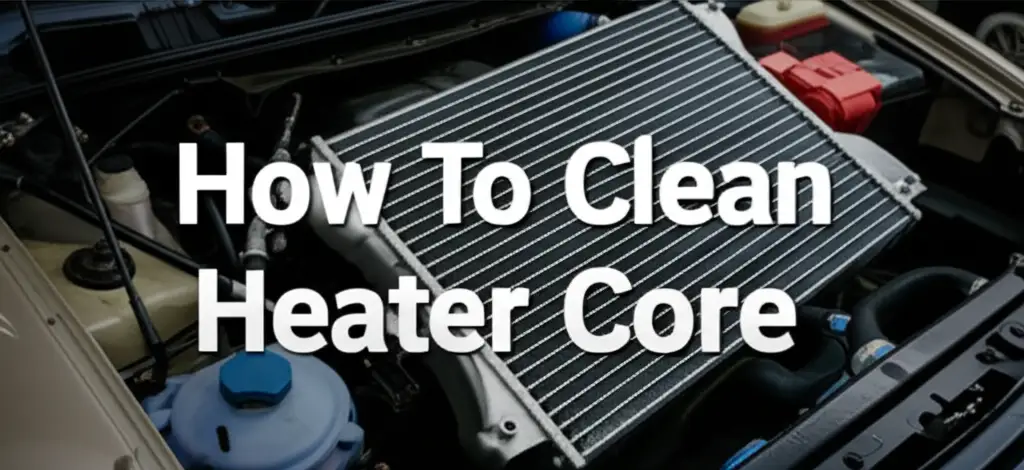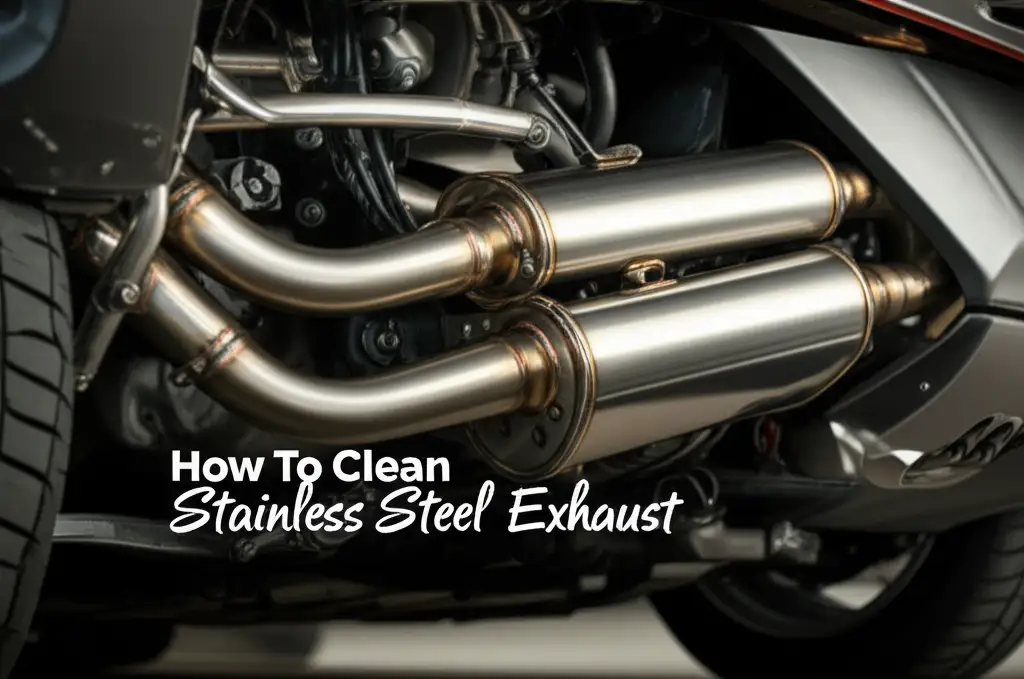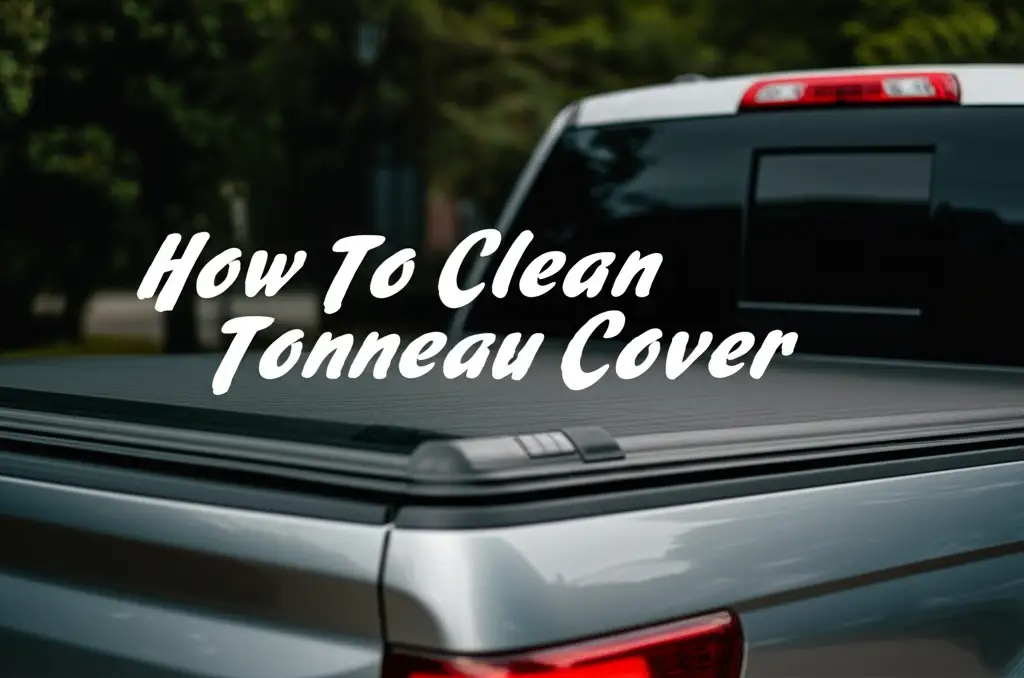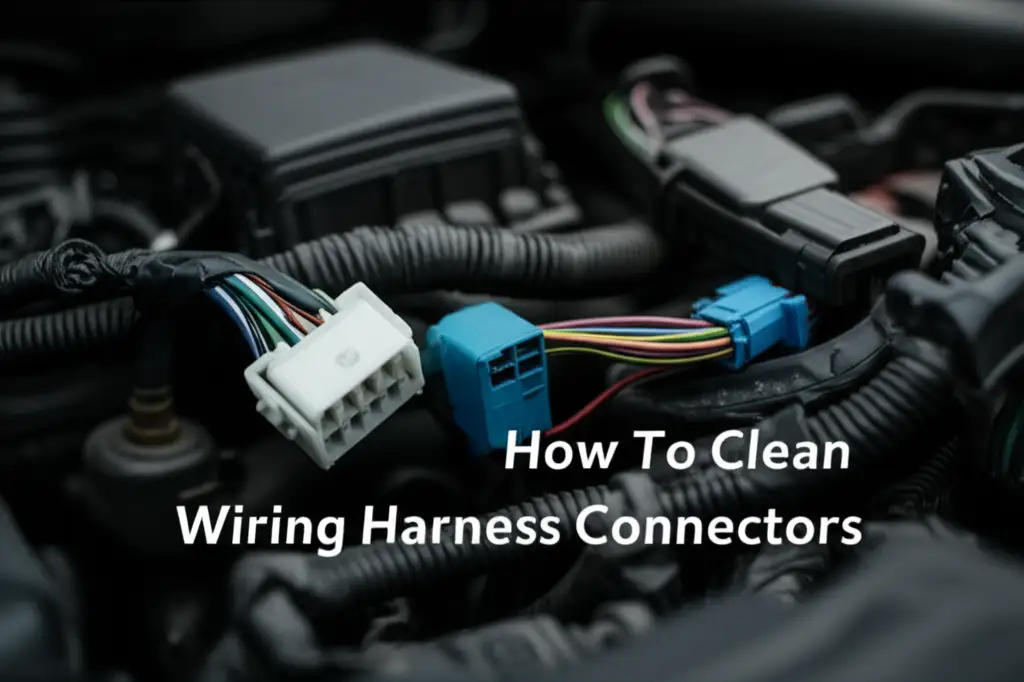· Vehicle Maintenance · 17 min read
How To Clean Snowmobile Clutch
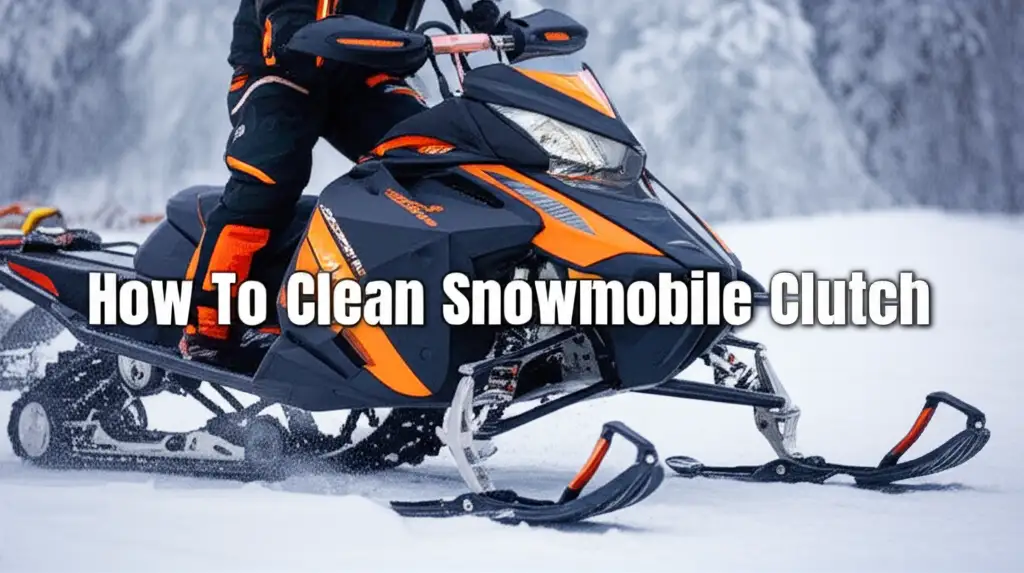
Clean Your Snowmobile Clutch for Peak Performance
As a snowmobile enthusiast, I understand the thrill of gliding across fresh snow. This experience relies heavily on your machine running perfectly. A key part of that performance comes from a well-maintained clutch. Over time, your snowmobile clutch collects belt dust, dirt, and grime. This buildup reduces efficiency and can lead to expensive repairs. Knowing how to clean snowmobile clutch components is vital. This guide will walk you through the process step by step. We will cover necessary tools, safety precautions, and deep cleaning techniques. You will learn to restore your clutch to its optimal state. A clean clutch means a smoother ride and more power. Let us make sure your snowmobile is ready for the trails.
Takeaway:
- Regular snowmobile clutch cleaning prevents performance issues.
- Gather specific tools and prioritize safety before starting work.
- Proper disassembly and reassembly are crucial for clutch function.
- Thorough cleaning removes harmful belt dust and debris.
- Routine inspection and maintenance extend clutch lifespan.
To clean a snowmobile clutch, you must first remove it from the snowmobile. Then, disassemble its components carefully. Use a specialized clutch cleaner or brake cleaner to remove all belt dust and grime from the sheaves, weights, and rollers. Inspect all parts for wear or damage before reassembling the clutch. Finally, reinstall the cleaned clutch onto your snowmobile.
Importance of a Clean Snowmobile Clutch
Your snowmobile’s clutch is like its heart. It transfers power from the engine to the track. A clean snowmobile clutch ensures smooth operation. It helps your machine respond well to throttle input. When the clutch is dirty, this power transfer becomes inefficient.
Dirt and belt dust are the main enemies of a snowmobile clutch. These particles build up on the clutch sheaves and moving parts. This buildup creates friction where it should not exist. It also prevents parts from moving freely. Your clutch cannot fully open or close. This leads to several problems during your ride.
First, you might notice a loss of power. Your snowmobile might struggle to accelerate. It may not reach its top speeds. The engine will work harder to compensate. This increases fuel consumption. It also puts more stress on other engine components. A dirty clutch directly impacts your snowmobile’s overall performance.
Second, a dirty clutch causes excessive heat. Friction from the dust generates heat. This heat can warp clutch components. It can also cause the drive belt to wear out faster. Replacing a drive belt is an inconvenience. Replacing clutch parts is often more expensive. Preventative snowmobile clutch cleaning saves you money in the long run.
Finally, a dirty clutch affects ride quality. You might experience rough engagement. The clutch could grab or slip. This makes for an unpleasant and unsafe ride. Regular cleaning keeps your snowmobile running smoothly. It ensures you have consistent power delivery. I have seen firsthand how a simple cleaning can transform a snowmobile’s feel. It makes every ride more enjoyable. Keep your clutch clean for peak snowmobile performance and longevity.
Essential Tools for Snowmobile Clutch Cleaning
Before you start, gather all the tools and materials you will need. Having everything ready saves time. It also prevents interruptions during the cleaning process. You want to make sure you have the right items for a complete job. Using proper tools ensures safety and effectiveness.
Here is a list of what you will need:
- Clutch Puller Tool: This is specific to your snowmobile model. It is essential for safely removing the clutch. Do not try to remove the clutch without one. You risk damaging the clutch or yourself.
- Clutch Holding Tool: This tool helps secure the clutch. It prevents it from spinning while you work on it. This makes disassembly much safer and easier.
- Torque Wrench: Crucial for reassembling the clutch properly. Correct torque ensures parts are tight but not overtightened. Overtightening can damage components.
- Socket Set: You will need various sizes for bolts and nuts. Make sure your set includes sizes appropriate for your snowmobile.
- Allen Wrenches/Hex Keys: Some clutch components use hex bolts.
- Wire Brush (Nylon or Brass): For scrubbing away stubborn dirt. A nylon brush is gentler on parts. A brass brush offers more scrubbing power for tough spots.
- Shop Rags or Microfiber Cloths: For wiping away cleaners and drying parts. Avoid lint-producing cloths.
- Compressed Air: Excellent for blowing away loose dust and drying components. Canned air or an air compressor works well.
- Clutch Cleaner or Brake Cleaner: Choose a non-chlorinated, residue-free spray. These types evaporate cleanly. They do not leave behind any film that could affect clutch performance. Ensure it is safe for rubber and plastic if your clutch has those parts.
- Safety Glasses: Protect your eyes from debris and cleaning solutions.
- Gloves: Protect your hands from grime and chemicals.
- Parts Tray: To keep track of small bolts, washers, and other components. Losing a small part can stop your project.
Having these items ready makes the cleaning process smooth. I always lay out my tools neatly before I begin. This organized approach helps me stay focused and efficient. It also helps prevent any frustration during the process.
Safety Measures Before You Clean Your Snowmobile Clutch
Safety is always the first priority when working on any machinery. A snowmobile clutch involves moving parts and high-tension springs. Taking proper precautions prevents injuries. It also protects your snowmobile from accidental damage. Never rush through these steps.
First, ensure your snowmobile is on a stable, level surface. You need a secure workspace. I prefer using a reliable snowmobile stand or lift. This raises the track off the ground. It also makes access to the clutch area much easier. You do not want the snowmobile to shift while you are working.
Next, disconnect the spark plug wires. This prevents accidental starting of the engine. Even if you think the key is off, take this extra step. It is a simple but critical safety measure. Pulling the spark plug caps ensures the engine cannot fire up. I always do this before touching any engine components.
Then, remove the drive belt. The drive belt connects the primary and secondary clutches. You cannot work on the clutches with the belt in place. Removing it also helps you inspect the belt for wear. A worn belt can cause similar symptoms to a dirty clutch. Make sure to note its direction of rotation if you plan to reuse it.
Work in a well-ventilated area. Clutch cleaners and brake cleaners produce fumes. These fumes can be harmful if inhaled in large quantities. An open garage door or a fan helps circulate air. Never clean parts in an enclosed space without proper ventilation. This is crucial for your health.
Wear appropriate personal protective equipment (PPE). Safety glasses protect your eyes from chemicals and flying debris. Gloves shield your hands from grease, dirt, and harsh cleaning agents. Long sleeves and pants are also good for general protection. I always put on my safety glasses before reaching for any tools. Your safety comes first.
Take your time with each step. Do not force any parts. If something feels stuck, re-evaluate your approach. Forcing parts can cause damage. It is better to pause and double-check your method. A patient approach ensures a successful and safe cleaning job.
Disassembling Your Snowmobile Clutch for Cleaning
Disassembling the snowmobile clutch is the most technical part of the cleaning process. It involves carefully removing components. You need to know how the primary and secondary clutches work. This understanding helps you put them back together correctly. Always remember the order of parts.
Start with the primary clutch. This clutch is on the engine crankshaft. It engages first when you accelerate. You need your specific clutch puller tool for this. Most primary clutches are held by a large bolt. Remove this bolt first. Then, thread the clutch puller into the clutch housing. Slowly turn the puller tool. The puller pushes against the crankshaft end. This action separates the clutch from its tapered shaft. The clutch will pop off with a distinct sound. Be prepared to catch it. I always put a rag below it.
Once the primary clutch is off, you can begin to take it apart. The primary clutch usually consists of:
- Fixed Sheave: The part that does not move.
- Movable Sheave: The part that slides in and out.
- Weights and Rollers: These parts move outwards with RPMs. They push the movable sheave.
- Spring: Provides tension for engagement and disengagement.
- Spider: Holds the weights and rollers.
Use your clutch holding tool to secure the movable sheave. This allows you to remove the large nut or bolts holding the spider. Be very careful. The spring inside is under high tension. Slowly loosen the bolts, allowing the spring tension to release. Once the spider is removed, you can take out the weights, rollers, and spring. Keep all these small parts organized in your parts tray. It helps immensely for reassembly.
Next, move to the secondary clutch. This clutch is on the jackshaft or transmission input shaft. It works with the primary clutch to vary the gear ratio. Secondary clutches are often easier to remove. They typically have a large bolt holding them. Remove this bolt. The clutch should slide off the shaft. If it is stuck, a gentle wiggle might help.
The secondary clutch also has a fixed and movable sheave. It contains a spring and sometimes rollers. Disassemble it carefully. Note the position of the spring. Many secondary clutches have index marks for spring tension. Make a note of these settings. This ensures proper reassembly. You might need to compress the spring to remove it. Again, keep all parts organized. Remember, the goal is to clean every surface. Removing all parts allows thorough access.
- When removing small parts, consider taking photos with your phone. This visual record is excellent for reassembly.
- Place parts in a specific order in your tray. This helps to remember their placement.
Understanding the components makes this step easier. Taking your time here prevents lost parts or damage.
Deep Cleaning Your Snowmobile Clutch Components
Now comes the actual cleaning process. This is where you remove all that accumulated dirt and belt dust. A thorough cleaning ensures your snowmobile clutch performs its best. Focus on each component individually.
Start with the large metal sheaves. These are the main plates that pinch the belt. Use your clutch cleaner or brake cleaner generously. Spray down the fixed and movable sheaves. Pay special attention to the surfaces that contact the drive belt. These surfaces accumulate the most belt dust. Use your wire brush (nylon or brass, depending on the severity of buildup) to scrub away any stuck-on grime. A nylon brush is good for general cleaning. A brass brush helps with tougher, baked-on residue. Avoid scratching the smooth surfaces. Once scrubbed, wipe the sheaves clean with a shop rag. Then, blast them with compressed air. Ensure no cleaner residue remains. For very stubborn deposits, you might need to repeat this process. Think of it like cleaning sediment out of a well; you want to remove all the trapped particles.
Next, clean the weights, rollers, and pins. These small parts are critical for clutch engagement. They can get caked with a mix of dust and grease. Spray them thoroughly with cleaner. Use a small brush or a cotton swab to get into crevices. Ensure rollers spin freely on their pins. If they are sticky, it means they are not clean enough. Wipe them dry and use compressed air. Ensure no debris is left on these moving parts.
Clean the central bore of both clutch halves. This is where the clutch mounts to the crankshaft or jackshaft. Use cleaner and a rag to wipe away any rust or debris. This ensures a tight fit upon reassembly.
For any plastic components, like some slider buttons or guides, use a cleaner safe for plastics. Some brake cleaners can be harsh on certain plastics. Always check the label. A mild detergent solution and water can also work. Ensure these parts are completely dry before reassembly. Consider how you would clean a plastic shower – gentle but thorough.
Do not forget the clutch springs. Wipe them clean with a rag. Inspect them for any signs of corrosion or fatigue. A clean spring operates correctly.
Once all parts are clean, dry them completely. Compressed air is excellent for this. Any moisture left behind can lead to rust. Rust will quickly degrade your hard work. Ensure surfaces are smooth and free of any residue. A clean, residue-free surface is essential for proper clutch operation. I always make sure every part is gleaming before the next step. Just like cleaning stainless steel, you want a pristine finish for optimal function.
Inspecting and Reassembling the Cleaned Clutch
After deep cleaning, inspecting each part is crucial. This step helps identify wear or damage. Replacing worn components now prevents future problems. Reassembly requires precision and following specific torque specifications.
Start with the primary clutch components. Examine the sheaves for any grooves, nicks, or uneven wear. Deep grooves on the belt contact surfaces indicate excessive wear. This can impact belt grip and power transfer. Also, check for any bluing, which suggests overheating. If sheaves show significant damage, replacement might be necessary.
Inspect the clutch weights and rollers. Look for flat spots on the rollers. Check for wear on the pivot pins where the weights attach. Worn rollers or pins cause inconsistent clutch engagement. They reduce performance. Ensure the weights move freely. Any sticking indicates a problem. Replace these parts if they show signs of wear.
Examine the primary clutch spring. Look for cracks, bends, or corrosion. A fatigued spring will not provide proper tension. This affects engagement RPMs and shift characteristics. Compare its length to new specifications if you have them.
Move to the secondary clutch. Inspect its sheaves for wear, just like the primary. Check the helix for any damage or flat spots. The helix profile is critical for proper shifting. Ensure the rollers or buttons on the helix are smooth and roll freely. Any rough spots or binding will cause jerky operation. Inspect the secondary spring for fatigue or damage.
Once you have inspected all parts and replaced any worn ones, begin reassembly. This is essentially reversing the disassembly steps.
- Secondary Clutch Reassembly: Install the spring and helix onto the movable sheave. Align any marks you made for spring tension. Install the movable sheave onto the fixed sheave. Secure it with the retaining bolt. Ensure all components move freely.
- Primary Clutch Reassembly: First, place the primary spring back into the movable sheave. Then, position the weights and rollers into the spider. Carefully align the spider with the movable sheave. You will need to compress the spring to seat the spider. Use your clutch holding tool to secure it while you tighten the bolts. Tighten bolts gradually and evenly. Refer to your snowmobile’s service manual for specific torque settings. Overtightening can damage components. Using a torque wrench is essential here. Once the spider is secure, confirm the weights and rollers move freely.
Before reinstalling the clutch onto the snowmobile, give both clutches one last check. Ensure everything is tight. Verify that all moving parts slide smoothly. There should be no binding. This inspection is your final chance to spot issues. Proper reassembly is key to restored performance. It ensures your cleaning efforts pay off.
Maintaining Your Snowmobile Clutch for Lasting Performance
Cleaning your snowmobile clutch is a great step. However, regular maintenance ensures lasting performance. It extends the life of your clutch and belt. Think of it as a continuous care process. A little effort goes a long way.
First, make clutch inspection a routine. Every 500-1000 miles, or at least once a season, open up your clutch cover. Look inside for belt dust buildup. You might not need a full disassembly cleaning every time. Often, a quick blast with compressed air can remove loose dust. This prevents it from caking on. Regular checks also help you spot early signs of wear. Early detection of problems saves money. It prevents a small issue from becoming a major repair.
Always use the correct drive belt for your snowmobile. An incorrect or cheap belt can cause excessive dust. This leads to more frequent cleaning. Good quality belts are designed to last. They shed less material. Ensure your belt tension is set correctly. An overtight or too loose belt can also increase wear and dust production. A properly tensioned belt works more efficiently.
Consider your riding habits. Aggressive acceleration and sudden stops put more stress on the clutch. This can generate more heat and belt dust. While snowmobiling is exciting, a smoother riding style can be easier on your clutch. Avoid prolonged idling in deep snow. This can slip the belt and create heat. Sometimes, clutch issues can mimic problems with your water filter – a restriction in flow or performance.
Store your snowmobile properly during the off-season. Disconnect the drive belt when storing for long periods. This relieves tension on the clutch springs. It helps prevent spring fatigue. Store your snowmobile in a dry environment. This prevents rust and corrosion on clutch components.
If you ride in extremely dusty or dirty conditions, consider more frequent cleanings. Mud, dirt, or sand can get into the clutch housing. These contaminants act as abrasives. They cause accelerated wear on all moving parts. A quick clean-out after such rides is a smart move. Just as you might regularly clean under a refrigerator to remove hidden debris, getting into the tight spots of your clutch is important.
Finally, if you notice recurring issues, consult a professional. Sometimes, a clutch needs specific adjustments or part replacement. A professional can diagnose complex problems. They can ensure your clutch is balanced and tuned. Taking good care of your snowmobile clutch ensures many seasons of fun.
FAQ Section
How often should I clean my snowmobile clutch?
You should clean your snowmobile clutch at least once per season, typically before winter starts. If you ride in very dusty or muddy conditions, or ride aggressively, more frequent cleaning, perhaps every 500-1000 miles, is beneficial to prevent excessive belt dust buildup.
What are the signs of a dirty snowmobile clutch?
Signs of a dirty clutch include loss of power, poor acceleration, inconsistent or rough engagement, belt slippage, increased fuel consumption, and excessive heat from the clutch area. You might also hear unusual noises, like squealing or grinding.
Can I clean my snowmobile clutch without removing it?
You can perform a superficial cleaning without full removal. Using compressed air to blow out loose belt dust from the sheaves is possible. However, a deep clean requires removing and disassembling the clutch to access all components and truly remove caked-on grime.
What kind of cleaner should I use on my snowmobile clutch?
Use a non-chlorinated, residue-free clutch cleaner or brake cleaner. These products evaporate completely and do not leave behind any film that could affect clutch performance. Always check the product label to ensure it is safe for all clutch materials, including any plastic components.
Is it hard to reassemble a snowmobile clutch?
Reassembling a snowmobile clutch requires patience and precision. The most challenging part is often compressing the primary clutch spring to secure the spider. Using the correct clutch holding tools and referring to your snowmobile’s service manual for torque specifications makes the process much smoother.
What should I look for when inspecting clutch components?
When inspecting, look for excessive wear, flat spots on rollers, grooves or nicks on sheaves, and signs of overheating like bluing. Check springs for cracks, bends, or fatigue. Any part showing significant wear or damage should be replaced to ensure optimal performance and safety.
Conclusion
Cleaning your snowmobile clutch is a vital maintenance task. It directly impacts your machine’s performance, reliability, and lifespan. We have covered why a clean clutch matters, what tools you need, and how to safely disassemble, deep clean, and reassemble its components. From removing stubborn belt dust to carefully inspecting each part, you now have the knowledge to perform this critical service.
A properly cleaned and maintained snowmobile clutch provides smoother engagement. It delivers consistent power. It also helps prevent costly repairs. By following these steps, you are not just cleaning a part. You are ensuring countless more exhilarating rides on the snow. Make snowmobile clutch cleaning a regular part of your winter preparation. Your snowmobile will thank you with peak performance every time you hit the trails. Get out there and enjoy the ride, knowing your machine is running at its best!
- snowmobile maintenance
- clutch cleaning
- snowmobile performance
- winter vehicle care
- power transfer

